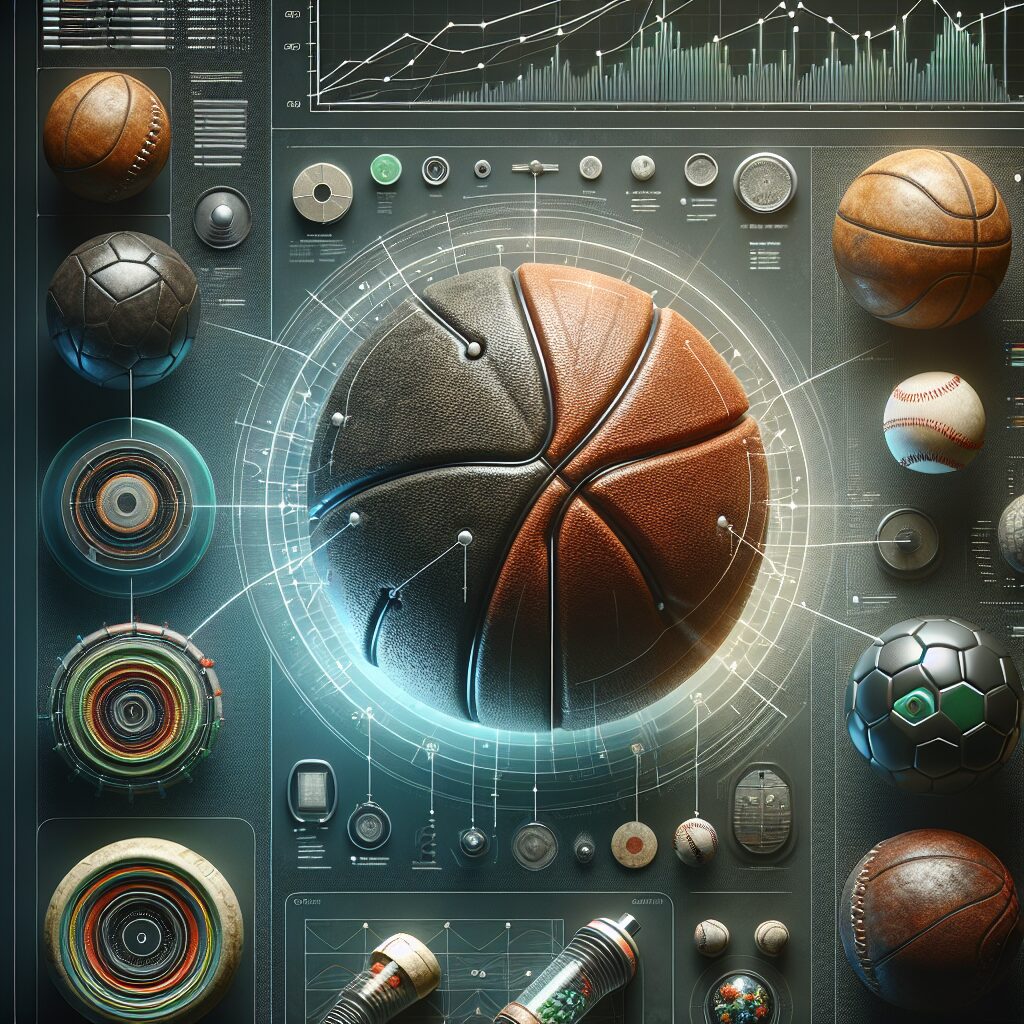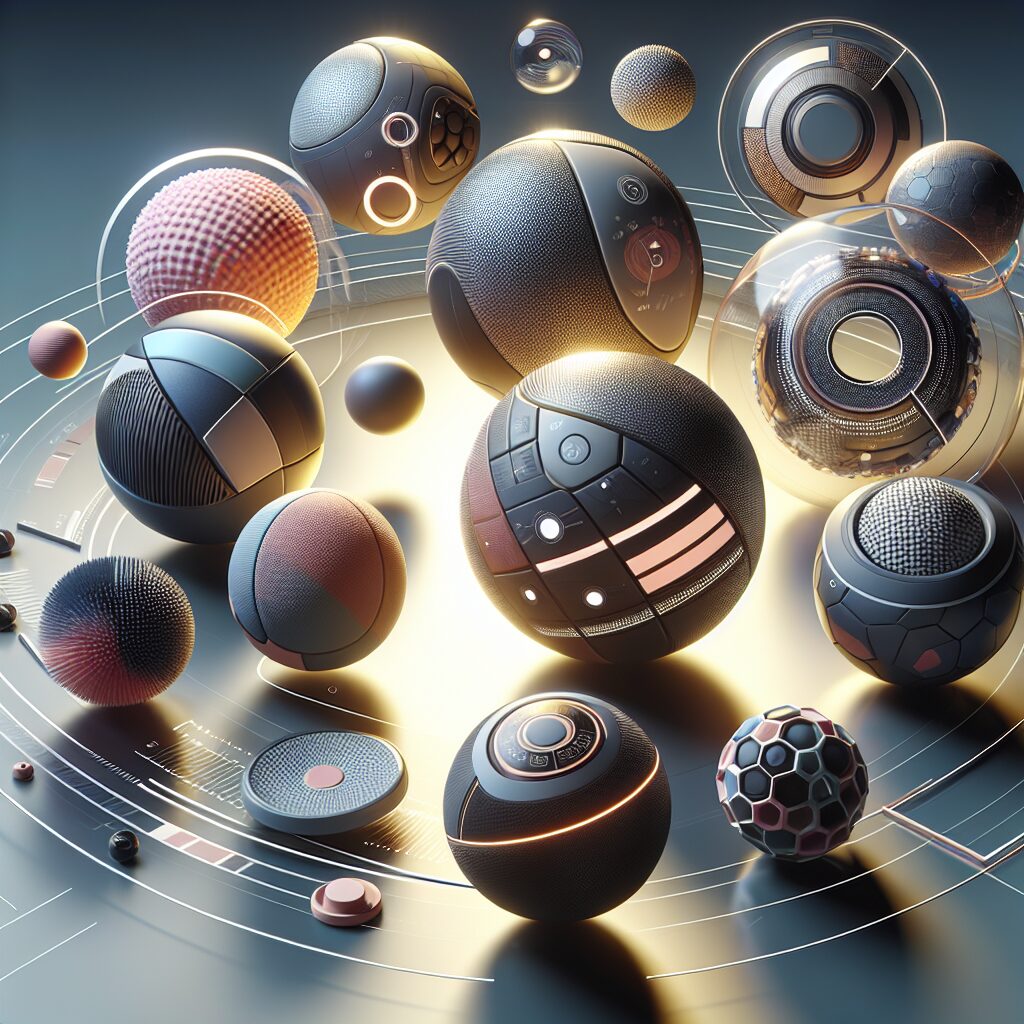Advancements in Ball Technology Driven by Impact have revolutionized the world of sports, enabling athletes to achieve remarkable feats and break records like never before. Impact refers to the force or collision between the ball and another object, such as a bat, racket, or player. In recent years, researchers and manufacturers have delved into the science of impact, striving to create balls that optimize performance and enhance the overall sporting experience.
The impact between a ball and its surroundings has a profound effect on its trajectory, spin, and speed. Innovative designs and materials are now being employed to maximize the ball’s efficiency and improve player outcomes. For example, in tennis, the development of balls with greater elasticity has resulted in increased ball speed upon impact. Similarly, advancements in basketball technology have led to the creation of balls with superior grip and bounce, enabling players to execute intricate maneuvers with greater precision.
Moving forward, this article will delve into the key takeaways from these advancements in ball technology driven by impact. We will explore how these innovations have transformed various sports and discuss the potential future developments that could further revolutionize the field. By understanding the impact-focused advancements, athletes, enthusiasts, and manufacturers can stay ahead of the game and continue pushing the boundaries of what is possible. So, let’s dive in, examine the fascinating advancements in ball technology, and discover the potential they hold for the future of sports.
Key Takeaways
1. Ball technology is rapidly advancing due to the study of impact, helping scientists and engineers enhance performance and durability.
2. High-speed cameras and sensors capture data on impact forces, spin rates, and ball deformation, providing valuable insights for improving ball design.
3. Researchers use computer simulations to analyze ball behavior during various impacts, aiding in the development of new materials and designs.
4. Understanding the impact physics of different sports balls allows for customization to better suit specific sports, enhancing performance and player safety.
5. Advances in ball technology have the potential to revolutionize sports and even impact other fields like medicine and robotics.
What is the Impact of Advancements in Ball Technology on Sports Performance?
The Evolution of Ball Technology
Balls have been used in sports for centuries, but the technology behind them has come a long way. From primitive materials like animal bladders and stitched leather to modern synthetic materials, advancements in ball technology have greatly impacted sports performance.
Enhanced Performance and Durability
Advancements in ball technology have led to enhanced performance and durability. The use of high-quality materials such as polyurethane, composite leather, and synthetic rubber has resulted in balls that can withstand rigorous use without losing their shape or grip. These advancements contribute to better ball control, accuracy, and overall performance in various sports.
Improved Aerodynamics
Aerodynamics play a crucial role in ball sports, and advancements in ball technology have greatly improved the aerodynamic properties of sports balls. Through extensive research and testing, manufacturers have been able to design balls with reduced drag and enhanced stability in flight. This allows athletes to achieve better distance, accuracy, and control in sports like golf, tennis, and soccer.
Impact on Player Safety
Advancements in ball technology have also focused on enhancing player safety. In contact sports like football and rugby, the development of balls with improved impact absorption capabilities has helped reduce the risk of injuries. Additionally, the use of softer materials and cushioning technologies in ball construction has minimized the impact force transferred to players’ bodies during high-speed collisions.
Data Collection and Analysis
Modern advancements in ball technology have integrated data collection and analysis capabilities. Sensors embedded within balls can gather various metrics such as spin rate, impact force, and trajectory. This data is invaluable for athletes, coaches, and analysts as it allows for in-depth performance analysis, strategy development, and training improvement.
Driving Innovation and Competition
The advancements in ball technology have driven innovation and competition among manufacturers. Each brand strives to develop the most advanced and high-performing ball in the market. This competition has resulted in a constant push for breakthroughs, leading to further advancements in ball technology that benefit athletes across different sports.
Guides for Maximizing the Benefits of Advanced Ball Technology:
- Choose the Right Ball: Match the ball type and specifications to your specific sport and playing conditions.
- Maintain Proper Inflation: Follow manufacturer guidelines to ensure optimal performance and longevity of the ball.
- Regular Inspections: Check for any signs of wear and tear, such as cracks or loss of grip, and replace the ball if necessary.
- Utilize Data Analysis: Make use of the collected data to identify areas for improvement in your technique and performance.
- Stay Updated: Keep up-to-date with the latest advancements in ball technology to capitalize on the benefits they offer.
Frequently Asked Questions:
1. What is ball technology driven by impact?
Ball technology driven by impact refers to the advancements made in the design and development of balls used in various sports and industries, taking into consideration the impact forces they experience during use. It involves the use of innovative materials, manufacturing techniques, and engineering principles to create balls that enhance performance, durability, and safety.
2. How does impact affect ball performance?
The impact forces exerted on a ball during use can greatly influence its performance. These forces determine the ball’s trajectory, spin, bounce, and overall feel. By understanding the impact dynamics, ball technology experts can optimize the design and construction of balls to maximize performance in terms of accuracy, distance, control, and other desired characteristics.
3. What are the key advancements in ball technology driven by impact?
Advancements in ball technology driven by impact include the development of innovative core materials, such as high-density foams or composite materials, that provide improved energy transfer upon impact. Additionally, advancements in aerodynamics, surface textures, and manufacturing processes have also contributed to enhanced ball performance and stability.
4. How do advancements enhance ball durability?
Advancements in ball technology driven by impact often result in increased durability. By using durable materials and improved manufacturing techniques, balls can better withstand the repeated impacts, abrasion, and wear typically associated with sports and other ball-related activities. These advancements help prolong the lifespan of balls, reducing the need for frequent replacements.
5. Are advancements in ball technology only applicable to sports?
No, advancements in ball technology driven by impact have applications beyond sports. The principles and innovations can be adapted for various industries, such as automotive, aerospace, and even consumer products like packaging or household items. Impact-driven ball technology can improve safety, efficiency, and performance in a wide range of fields.
6. Do advancements in ball technology have any environmental benefits?
Yes, advancements in ball technology driven by impact can contribute to environmental sustainability. By improving the durability and lifespan of balls, fewer resources are required for manufacturing and disposal. Additionally, advancements in materials may allow for the use of more eco-friendly and recyclable components, reducing the environmental impact of ball production.
7. How do advancements in ball technology impact player safety?
Advancements in ball technology driven by impact have positively impacted player safety. By optimizing the design and construction of balls, manufacturers can reduce the risk of injuries caused by ball impacts. Improved shock absorption, reduced deformation, and enhanced stability contribute to a safer playing experience, particularly in high-velocity sports.
8. Can advancements in ball technology improve game performance?
Yes, advancements in ball technology driven by impact can significantly improve game performance. From specific sports like golf or tennis to team sports like soccer or basketball, optimized ball designs can enhance accuracy, control, and overall performance. By leveraging impact-driven advancements, athletes can achieve better results and elevate their game.
9. Are there any regulations or standards governing ball technology?
Yes, there are various regulations and standards in place to ensure the quality, performance, and safety of balls. For example, sporting bodies and organizations establish rules regarding ball specifications for different sports. Additionally, industry standards and certifications may exist to ensure the compliance of balls used in specific applications, such as automotive crash tests.
10. What can we expect in the future of ball technology driven by impact?
The future of ball technology driven by impact holds great promise. Continued advancements in materials science, computer simulations, and data analytics will likely lead to further innovations and improved performance. We can anticipate even more durable, efficient, and high-performing balls across various fields, benefiting athletes, industries, and consumers alike.
Final Thoughts
Advancements in ball technology driven by impact have revolutionized the way we play sports, engage in recreational activities, and even approach industrial challenges. The continuous pursuit of optimizing ball designs based on impact dynamics has paved the way for enhanced performance, durability, and safety. From golf balls that achieve greater distance and accuracy to industrial balls that endure extreme conditions, impact-driven advancements have tremendous potential across various domains.
As technology continues to evolve, we can expect greater exploration of new materials, manufacturing techniques, and engineering principles. These developments will not only improve performance but also minimize environmental impact, reduce costs, and enhance player safety. The future of ball technology driven by impact is an exciting journey towards pushing boundaries and unlocking new possibilities for both sports enthusiasts and industries worldwide.




